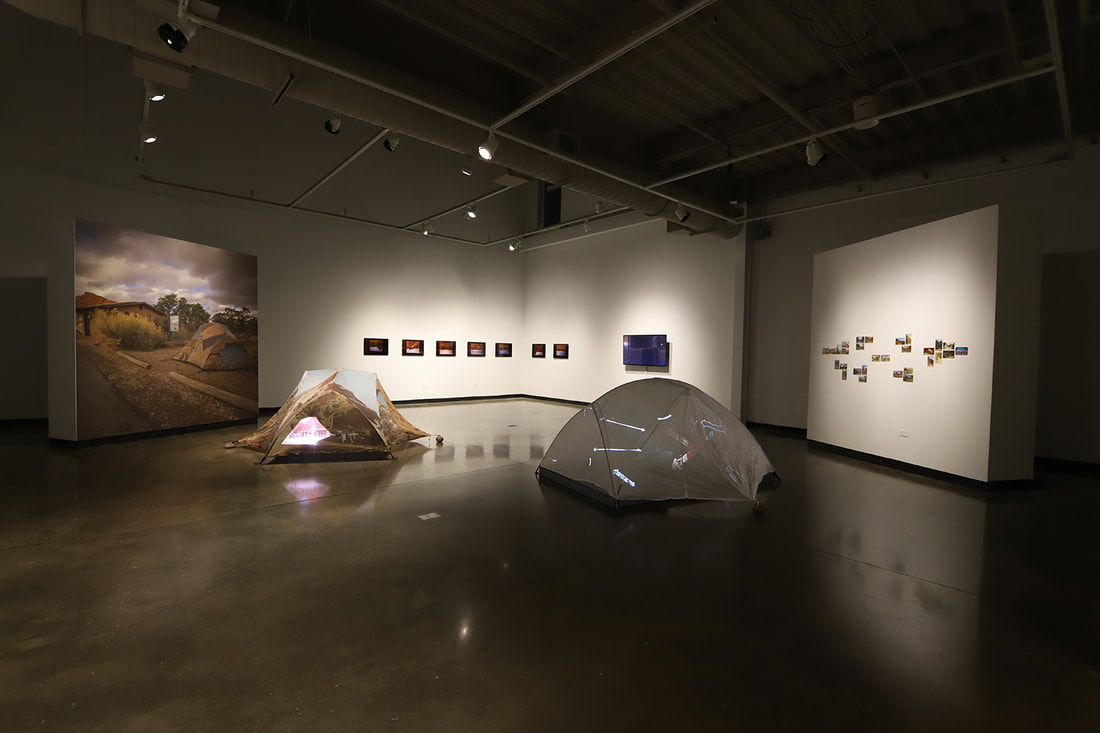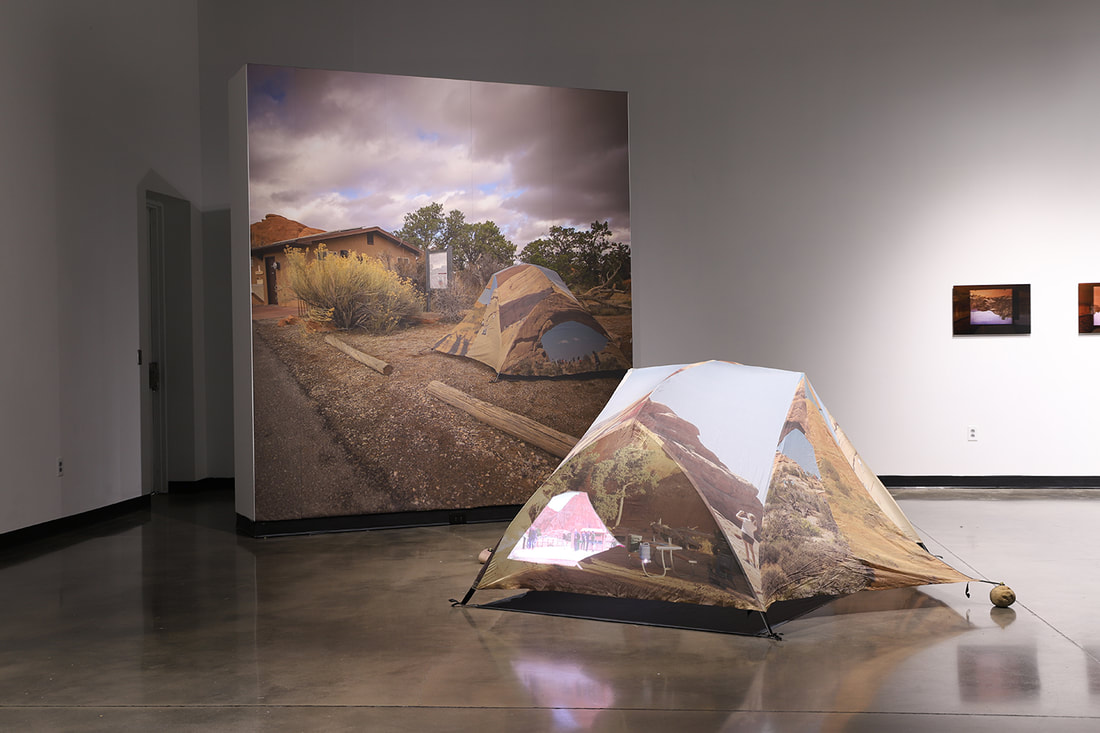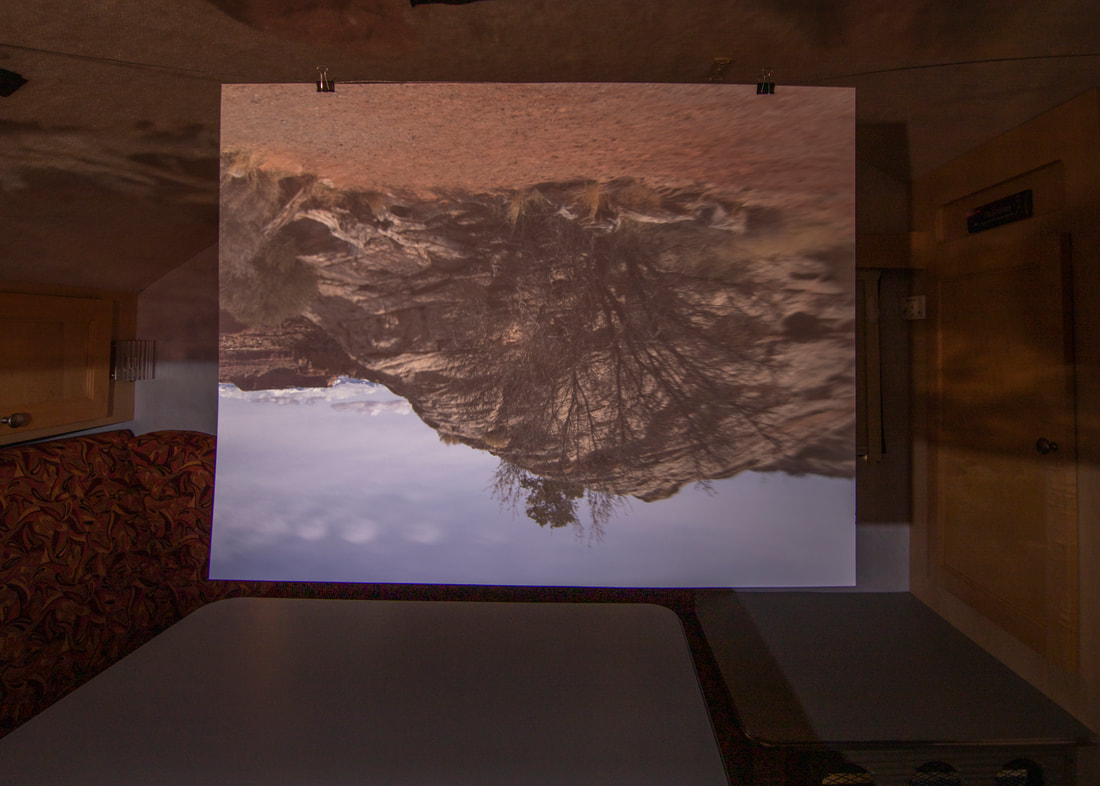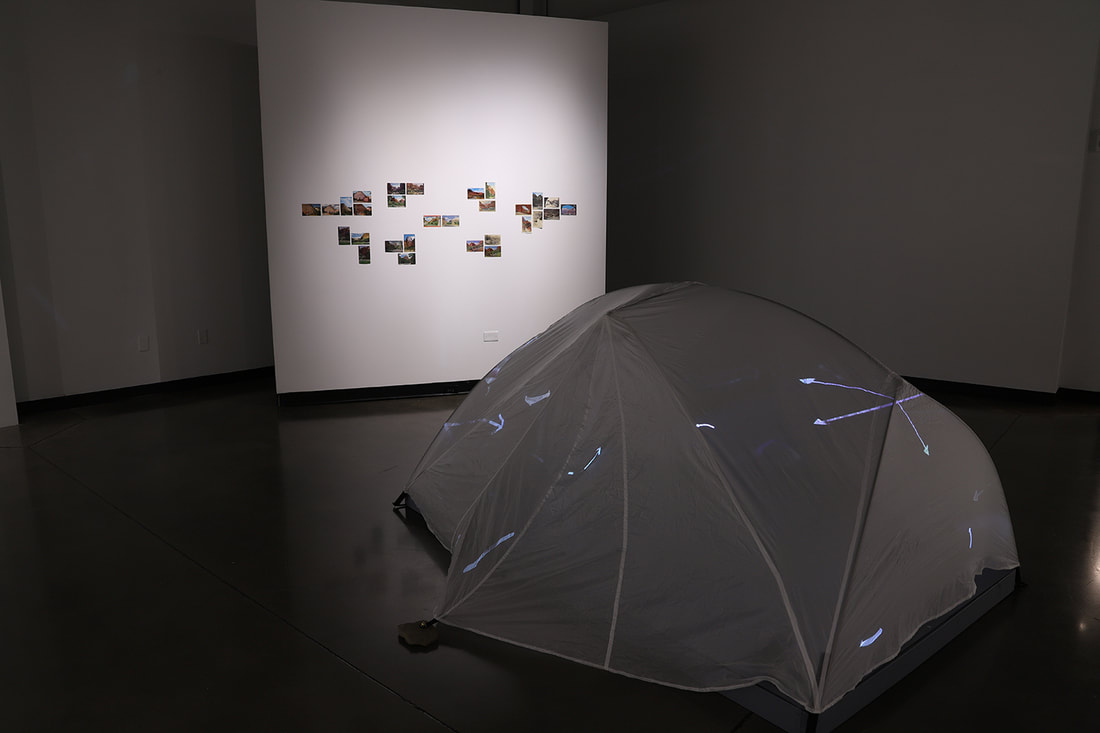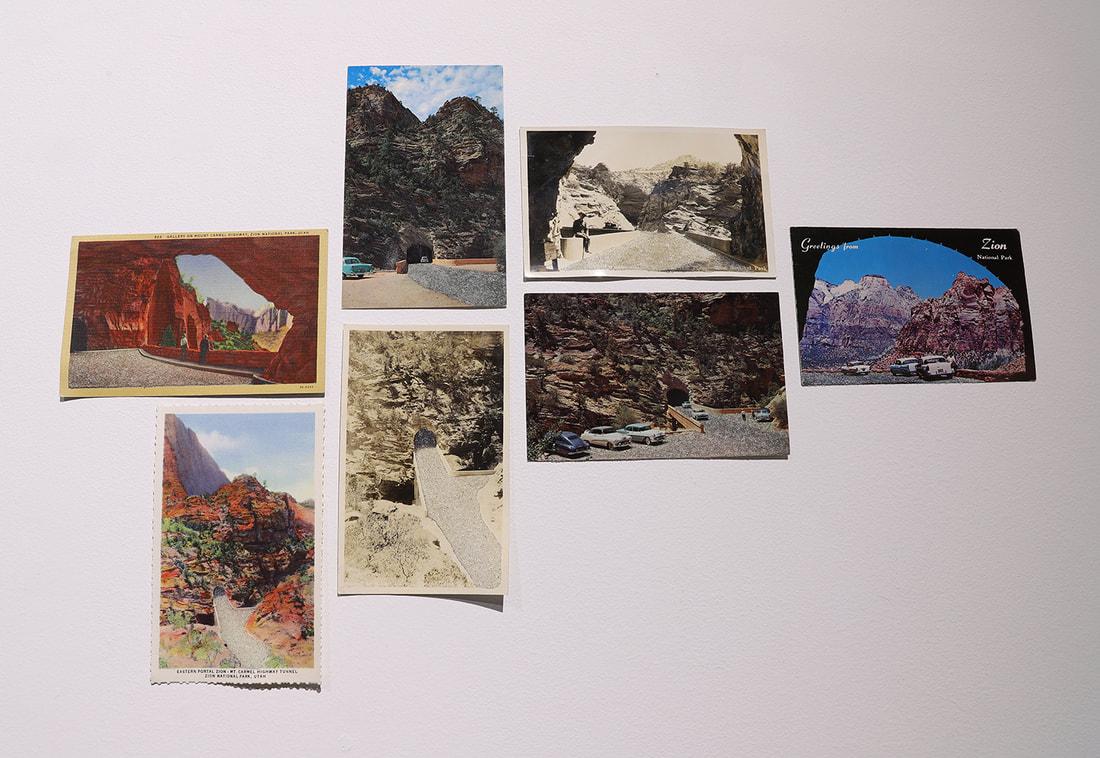In the spring of 2020, Katie Hargrave and I visited every National Park in Utah - Arches, Canyonlands, Capitol Reef, Bryce Canyon, and Zion. We turned a teardrop camper into a camera obscura and towed it behind us as we tried to outrun a blizzard and a global pandemic. When we arrived at Zion, the visitor's center was closed and through intermittent cell phone service, we came to understand that the world around us was changing rapidly. Over Look/Under Foot, the exhibition that came out of this trip, explores our relationship to public land. When we conceived of the trip and the systems we would use to document and mediate each park, we did not realize we would also be documenting the last days of public space before COVID-19.
The exhibition was installed at the New Gallery at Austin Peay State University in the fall of 2020. For more information, check out the visitor's guide, which includes an essay by Veronica Kavass.
| Over Look / Under Foot Gallery Guide | |
| File Size: | 807 kb |
| File Type: | |
As tent campers and National Parks enthusiasts, we spend a lot of time in the company of Airstreams, Winnebagos, and Jaycos, and have come to appreciate that for many, the RV makes a kind of relationship to nature possible. RVs can recreate the comfort and access of home, in the middle of spaces the federal government has set aside to be preserved as wild. We have seen our fellow campers set up potted plants, satellite dishes, and full multi-course meals, in the middle of what we hope to be wilderness. This comfort and accessibility is in opposition to romantic visions of national parks and some approaches to conservation. As nature writer Edward Abbey put it in Desert Solitaire, “You can’t see anything from a car.” There is a value judgement implicit in this statement. Abbey and others equate a certain connection to nature with spirituality, purity, and a unique kind of enlightenment, but that sort of experience in the outdoors deliberately excludes most park goers. Using a state with a wide variety of public lands as a springboard, we explore all five Utah National Parks and consider the complexities of a relationship to landscape that is heavily mediated by vehicles, cameras, and our own nostalgia.
We wish to acknowledge the land where this work was made, as the management of these places has happened from time immemorial by the Ute, Southern Paiute, and the Ancestral Pueblo peoples. While these sites are under the control of the National Parks system, it is indigenous peoples who continue to put necessary pressure on the US government to preserve these spaces.
We wish to acknowledge the land where this work was made, as the management of these places has happened from time immemorial by the Ute, Southern Paiute, and the Ancestral Pueblo peoples. While these sites are under the control of the National Parks system, it is indigenous peoples who continue to put necessary pressure on the US government to preserve these spaces.
|
ARCHES
We sewed a tent printed with creative commons tourist photos from Arches National Park and set it up at the Devil's Garden campground. Until recently, there were no water sources in Arches - visitors had to bring in all the water they would need. Although every year tourists would die of heat stroke, it wasn't until an influx of international visitors had trouble using the composting toilets that the Park built bathrooms and installed running water at several locations. We set the tent up at one of these new facilities and photographed it. We also shot video of tourists taking pictures, and that footage is projected onto the side of the tent. What is the difference between our portrayals of public land and the actual experience? |
|
CANYONLANDS
Next we went to Canyonlands, where we stopped at the seven scenic overlooks in the Islands in the Sky section of the park. At each spot, we parked the teardrop camper and set up the camera obscura. We blocked out all of the windows of the camper, only allowing light in through a small hole. That hole acts as a lens, projecting an upside down image of the view outside the camper onto the interior of the space. |
CAPITOL REEF
At Capitol Reef, we drove the 8 mile scenic drive through the park, capturing the route with the teardrop camera obscura. The site now designated a National Park has long been the only convenient route through Waterpocket Fold, a hundred mile long cliff face that spans southern Utah. For thousands of years, humans have traversed this path. Above is a 5 minute excerpt from the hour long drive.
At Capitol Reef, we drove the 8 mile scenic drive through the park, capturing the route with the teardrop camera obscura. The site now designated a National Park has long been the only convenient route through Waterpocket Fold, a hundred mile long cliff face that spans southern Utah. For thousands of years, humans have traversed this path. Above is a 5 minute excerpt from the hour long drive.
|
ZION
Zion is one of the most popular parks in the United States, and we arrived just as the pandemic was fully taking hold. The relative off-season solitude we enjoyed at the previous parks was replaced with crowds that suddenly seemed ominous. We had already collected dozens of postcards depicting the roadways through the park, which are limited due to the narrow tunnel all traffic must go through when entering Zion from the south. We embellished these postcards with the glass beads that are mixed into road paint to make it reflective. We were not able to enter the visitor's center to see how the postcard offerings have been updated in recent decades. |
